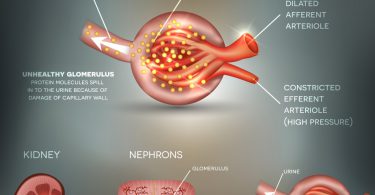Abstract
There are a variety of ways to deliver a long-term homoeopathic immunisation or homoeoprophylaxis (HP) program against targeted infectious diseases. There is no one single “perfect” program, however some programs appear to be not only inappropriate, but potentially unsafe. Research analysing the practical results from using a variety of programs will be presented and discussed, with suggestions made regarding the general principles which should underpin an appropriate long-term HP program.
Introduction
The place of homoeoprophylaxis (HP) in classical homeopathy was discussed in Vol.39,No.7 of The Homeopathic Heritage[1]. However, just as with homeopathic treatment, HP programs can be implemented in a variety of ways – not all of which deliver the safest and most effective outcomes to patients. We know from earlier research that around 75% of Australian practitioners either use or intend to use HP[2]. This usage profile will vary between countries, and further research planned during 2013/14 will aim to provide more information on international usage. We also know that not all HP programs have the same long-term effect[3]. It is essential, if a practitioner decides to provide long-term HP, that the program used maximises the safety and effectiveness of the intervention.
Evidence showing the varying results when using different HP programs will be presented, some inappropriate practices will be described, and finally some general principles which should underpin an appropriate long-term HP program are suggested.
Differences between HP Programs
The author examined five health markers (asthma, eczema, ear problems, allergies, behavioural problems) in, and infectious diseases contracted (whooping cough, measles, mumps) by 781 children aged between 4 and 12 years of age. The data from children who used an HP program supplied by the author, and those who did not, was identified and compared. It was also possible to identify children who had been given only HP to prevent targeted diseases – “HP Only”, and those who had used other methods as well as HP (such as vaccination or constitutional protection) – “All HP”.
The results are summarised in Table 1 below, and show that those children who used an HP program supplied by the author had a lower incidence of health conditions (with the exception of allergies in children who used HP only), and fewer infectious diseases (with the exception of mumps in all uses of HP).
Chi Squared tests were also performed to compare results from the use of the author’s programs and other programs. The results which were statistically significant (P < 0.05) showed that Asthma and the three diseases studied were all less likely to occur in an HP program supplied by the author compared to one not supplied by the author.
Table 1: Comparative HP Use – Program Supplied/Not Supplied by Golden – Proportions[4]
| All HP | HP Only | |||
| Golden | Not Golden | Golden | Not Golden | |
| Number of Respondents | 59 | 100 | 25 | 47 |
| HP only | 42.4% | 47.0% | ||
| Vaccination also | 33.9% | 31.0% | ||
| General Protection also | 44.1% | 42.0% | ||
| Incidence of Health Conditions | ||||
| Proportion with Asthma | 5.1% (3) | 16.0% (16) | 0.0% (0) | 4.3% (2) |
| Proportion with Eczema | 17.0% (10) | 20.0% (20) | 4.0% (1) | 12.8% (6) |
| Proportion with Ear/Hearing | 15.3% (9) | 26.0% (26) | 8.0% (2) | 21.3% (10) |
| Proportion with Allergies | 23.7% (14) | 29.0% (29) | 16.0% (4) | 12.8% (6) |
| Proportion with Behaviour Issues | 8.5% (5) | 12.0% (12) | 0.0% (0) | 6.4% (3) |
| Incidence of Infectious Diseases | ||||
| Proportion with Measles | 6.8% (4) | 18.0% (18) | 0.0% (0) | 12.8% (6) |
| Proportion with Whooping Cough | 10.2% (6) | 17.0% (17) | 0.0% (0) | 17.0% (8) |
| Proportion with Mumps | 1.7% (1) | 1.0% (1) | 0.0% (0) | 0.0% (0) |
These results demonstrate that the construction of a long-term HP program does make a difference to the resulting safety and effectiveness of the program.
Examples of Inappropriate HP Programs
Three practical examples of inappropriate long-term HP will illustrate the point:
Example 1: The mother of a child using an HP program requested a “second opinion” because what her practitioner had said “didn’t feel right”. Her child was in the middle of a weekly course of the meningococcal nosode. There was an outbreak of chicken pox at her child’s kinder, and her practitioner had told her that the two remedies wouldn’t affect each other, and to concurrently give the varicella nosode.
Three problems with what was advised are (i) Two HP remedies should not be given at the same time. Irrespective of a practitioner’s opinion, or “testing” in any of a variety of ways, concurrent use will lessen the chance of either one achieving its maximum potential protective effect. (ii) Long-term HP doses should be given infrequently, not daily for a week or more, to minimise the change of a proving. (iii) If there is a high risk of exposure to a particular disease then that should be the sole preventative focus, and a short-term booster using appropriate remedies in medium potencies (30, 200, or M) once or twice a week for 2-3 weeks would be indicated.
Example 2: Some long-term HP programs give a daily dose of a remedy for days, for weeks and, in a few cases observed, for months. Not only is that amount of remedy unnecessary to achieve a protective effect, it significantly increases the potential for a proving to occur. One practitioner gave a 30c potency of the nosode for one disease for a month, followed immediately by a month’s dosing for the next disease, and so on for a year. Such programs are potentially dangerous in that disruptive and potentially long-term adverse effects may occur.
Example 3: Some long-term HP programs use very low potencies. It is reasonable to expect that, as with treatment, the effect of a higher potency will last longer than the effect of a lower potency. Research by the author and others support this expectation. Thus long-term protection is most likely to be effective when medium to high potencies are used (200 – 10M). 6c and 12c potencies will provide a level of short-term protection, and may be quite appropriate in a brief outbreak of a disease in a community, however nothing less than a 200 potency for long-term protection is recommended to ensure that the effect of a dose will last for years, not days or weeks. The safety of these higher potencies has been tested and reported upon[5].
Some General Principles for the Long-Term Use of HP
The following 6 general principles may be used to construct a long-term HP program, based on published experience and research since 1986.
- All remedies used should be selected according to the similarity between the symptoms they can cause in healthy people, and the characteristic symptoms of the diseases they aim to prevent, i.e. the Law/Principle of Similars.
- All remedies should be administered in the least amount needed to produce a protective effect, i.e. the Law/Principle of Minimum Dose.
- Whilst the final choice of diseases to be covered rests with each parent, the program should reflect current trends in the likely exposure and potential severity of the diseases covered. It should also, within reason, reflect contemporary parental concerns regarding specific diseases.
- The use of triple doses is associated with an increase in both the rate of reactions to the program and the effectiveness of the program. Since reactions are typically rare (2%)[6] and mild, their use is worthwhile. Triple doses can be used in single potencies (e.g., 200 or 10M, which have been used since 2004). Plussing can be used if desired. Ascending potencies (e.g. 200, M, 10M) are also effective.
- The incidence of reactions is highest in the first 12 months of using the program[7]. In order to reduce even further the likelihood of reactions, an initial single dose in a lower potency (200) is recommended and, if no reactions occur, followed a month later by the first triple dose in a lower potency (also 200) and, if no reactions occur, followed at least a year later by subsequent triple doses in a higher potency (such as 10M) at least 12 months apart.
- Except for the first single and subsequent triple dose one month later, doses of each individual remedy should be spaced at least 12 months apart, and there should be a gap between different remedies in the program of at least one month. Short-term booster doses in between these long-term doses are appropriate if a light level of exposure is expected.
Research has shown that these general principles produce an HP program which has high level of effectiveness (90.4%), and high long-term safety[8]. The authors’s current 2013 program was shown in Table 2[9]. Parents are supplied with a full set of instructions (Note: practitioners who would like to request a copy of these instructions should email Dr Golden at [email protected]).
The recommended ages given in Table 2 are a guide only. Parents are advised that they can change the order of the remedies if they wish, remove some remedies, and include remedies for other diseases. They can use the program if their child has already received some vaccines. This program is designed specifically for Australian conditions. Needs in other countries will be different, and diseases may be either included or removed from this list as appropriate.
The key is flexibility and support of parental choice within a program that has been tested for effectiveness and long-term safety. Comprehensive instructions for implementation of a long-term HP program have been presented in The Complete Practitioner’s Manual of Homoeoprophylaxis[10].
Table 2: Recommended Remedies for Long-Term HP: Australian Conditions (2013)
| Code | Remedy Name | Disease | Months Given |
| The Main Program | |||
| A1 | Pertussin 200 | Whooping Cough | 1, 2* |
| A3 | Pertussin 10M | 12*, 26*, (52*) | |
| G1 | Pneumococcal 200 | Pneumococcal Disease | 3, 4* |
| G3 | Pneumococcal 10M | 15*, 30*, (58*) | |
| H1 | Haemophilis 200 | Haemophilis | 5, 6* |
| H3 | Haemophilis 10M | Influenzae type B | 18*, 36*, (64*) |
| I1 | Meningococcal 200 | Meningococcal Disease | 7, 8* |
| I3 | Meningococcal 10M | 21*, 40*, (70*) | |
| B1 | Tetanus Tox 200 | Tetanus | 9, 10* |
| B3 | Tetanus Tox 10M | 24*, 44*, (76*) | |
| Additional Remedies Supplied | |||
| E2 | Morbillinum M | Measles | If required – use where preferred |
| C2 | Lathyrus Sativus M | Polio | If required – use where preferred |
| J2 | Hepatitis B M | Hepatitis B | If required – use where preferred |
| Rota Virus | Rota Virus | If required – use where preferred |
|
| O | Oscillococcinum 200 | Influenza | In flu season – monthly, or as treatment |
| M | Ledum 30 | Tetanus wounds | If a wound – t.d.s. 3 days |
| * – indicates the use of a triple dose, i.e. three doses in 24 hours. ( ) – indicates optional final booster if required. |
|||
| The Supplementary Program | |||
| As with the earlier programs, remedies may be used to give additional protection if exposure is likely during a localised outbreak. The following remedies are used: A1, G1, H1, I1, C2, E2, J2, O, M. If exposure has already occurred, use expected treatment remedies (e.g. Pulsatilla 200 twice weekly following exposure to measles). | |||
Conclusion
The HP program shown in Table 2 is certainly not the only long-term HP program that is safe and effective. However programs that deviate significantly from the general principles advised, especially programs which give repeated doses of the same remedy in a potency which is too low to support long-term prevention anyway, should be validated by research before being used. This type of program has the potential to cause significant proving reactions without providing long-term protection.
Research has shown that different HP programs do produce different outcomes, and basic homoeopathic principles can be used to see why. The best programs are flexible and use infrequent doses of each particular remedy, based always on the Law/Principles of Similars.
References
[1] Golden I. (2013) The Place of Homoeoprophylaxis in Classical Homeopathy. The Homeopathic Heritage. Vol.39, No.27. October. Pp.33-39.
[2] Golden I. (2002) Attitudes to and Use of Homoeoprophylaxis by Australian Homoeopaths. Similia – the Journal of the Australian Homoeopathic Association, Vol. 14 No.2, 26-29.
[3] Golden I (2004) Homoeoprophylaxis – A Fifteen Year Clinical Study. Isaac Golden Publications. Gisborne, Victoria. pp. 45-49.
[4] Ibid. p.48.
[5] Golden I (2004) The Safety of Long-Term Homoeoprophylaxis – Research Findings. Homoeopathic Links. Vol. 17 (4). Winter, 261-263.
[6] Golden I (2004) op.cit. pp. 24-32.
[7] Ibid. page 15.
[8] Golden I. (2010) Vaccination & Homœoprophylaxis? A Review of Risks and Alternatives. 7th edition. Isaac Golden Publications, Gisborne, Australia.
[9] Golden I (2012) A Revised Six-Year Homoeoprophylaxis. Similia. Vol 24, No. 2. December, 40-42.
[10] Golden I. (2012) The Complete Practitioner’s Manual of Homoeoprophylaxis. Isaac Golden Publications, Gisborne. Australia.





